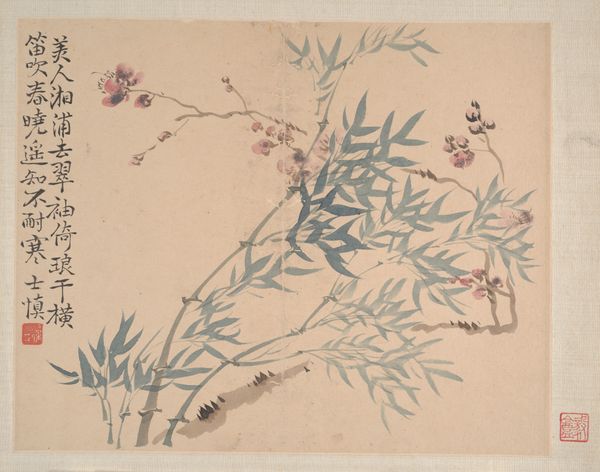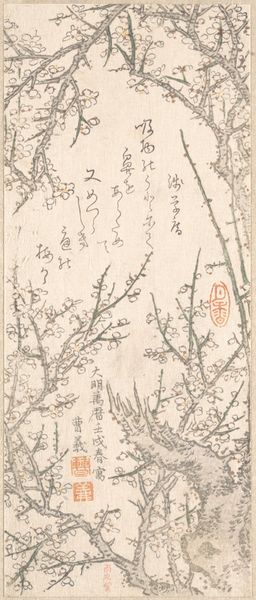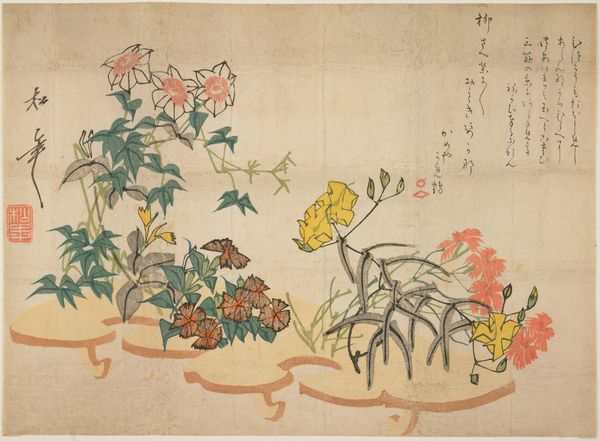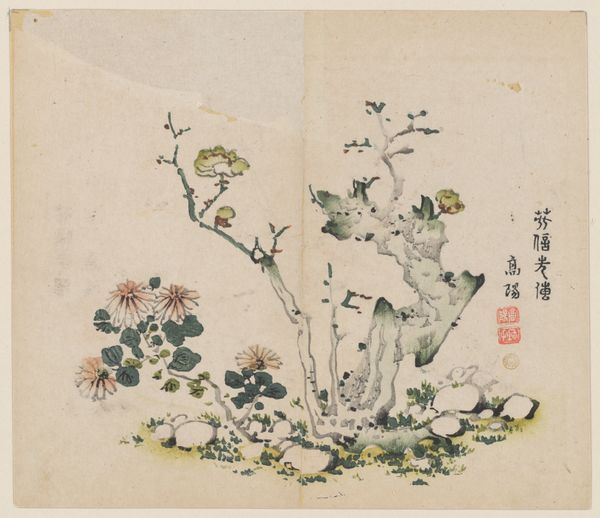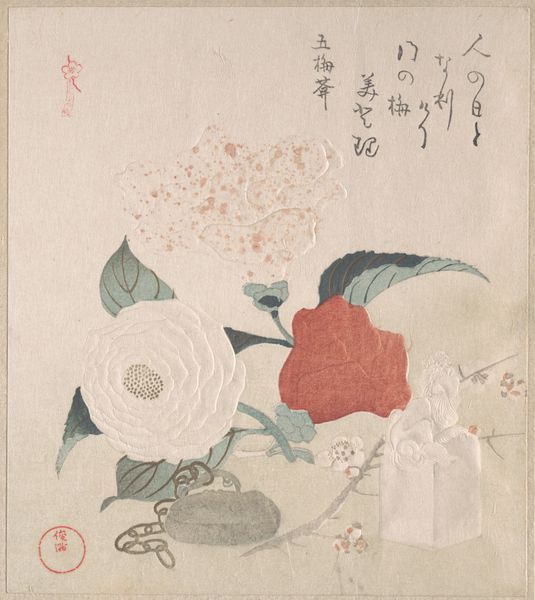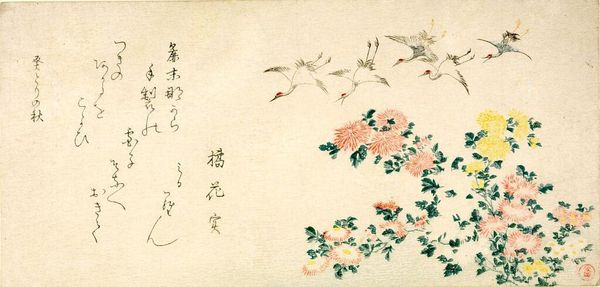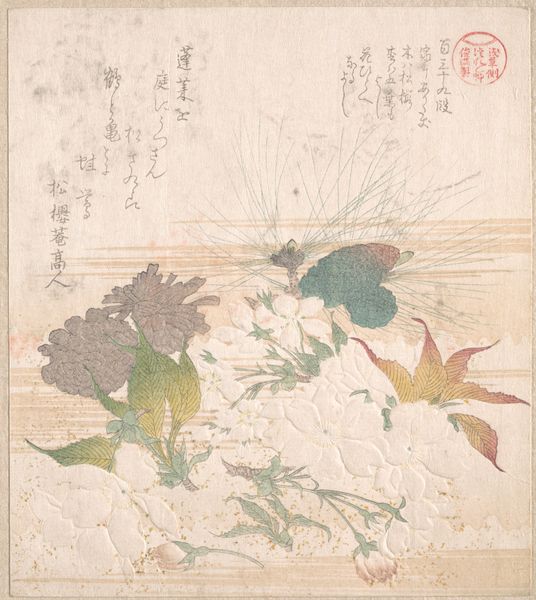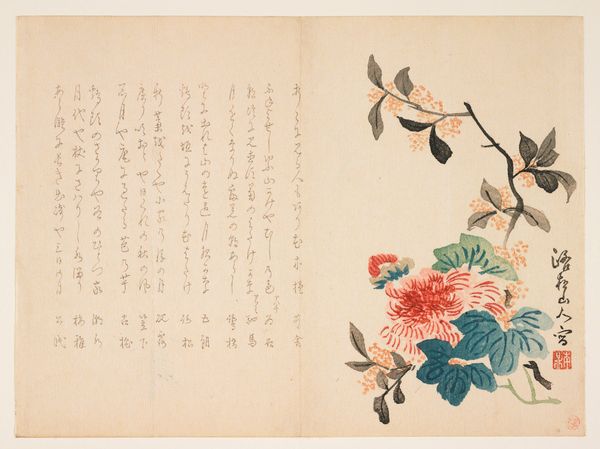
hanging-scroll, ink
#
water colours
#
figuration
#
form
#
hanging-scroll
#
ink
#
calligraphic
#
line
#
watercolor
#
calligraphy
Dimensions: 55 9/16 × 16 11/16 in. (141.13 × 42.39 cm) (image)71 7/16 × 21 1/4 in. (181.45 × 53.98 cm) (mount, without roller)
Copyright: Public Domain
Curator: Let's discuss this hanging scroll, “Joint Work of Birds and Flowers,” created around 1874 by Nakanishi Kōseki, held here at the Minneapolis Institute of Art. Editor: Immediately, the sparseness of the ink and watercolor grabs me. There's an intentional economy of means here, emphasizing the delicate relationship between the flora and fauna. Curator: Kōseki was a significant figure in the Bunjinga movement, and this work clearly shows the literati ideals he championed. We see an emphasis on personal expression and scholarly pursuits. Editor: Absolutely, but let’s not overlook the tangible aspects. The scroll itself, the type of paper, the pigments… They all point to the artist’s specific cultural and economic positioning within late 19th century Japan. What kind of ink and brushstrokes are employed here to convey a kind of spontaneity? Curator: Well, his influences included not just traditional Japanese art, but also exposure to Western painting techniques entering Japan at the time. The slightly muted watercolors suggest an awareness of this blending of aesthetic traditions. We see echoes of Japonisme, and this blending becomes a conscious act of cultural synthesis within Kōseki’s world. Editor: Do you see this act of cultural synthesis affecting the physical quality of labor embedded in this work? Did this influence labor practices, workshops, and how did it transform art production and training during the Meiji period? Curator: Undeniably so! We also can consider the prominent calligraphic elements, both as textual annotations and aesthetic components. They connect the visual imagery with literary traditions and further locate it within that literati context. Editor: Yet I can't help but see how each line, each delicate brushstroke, represents a specific type of training, expertise, and refined work, echoing the material and intellectual investment in each piece. Curator: Indeed. Kōseki's work presents a fusion of cultural ideals during a pivotal moment in Japanese history. Editor: Yes, and in tracing the material journey of these art supplies, and artistic methods, one reveals a tapestry of global exchange of art between Japan and the West during the Meiji period. It all influences production. Curator: Ultimately, this hanging scroll showcases not only artistic skill, but Kōseki’s place within a dynamic, evolving society. Editor: A testament to the complex relationship between artistic vision, materiality, and cultural exchange that keeps informing art history today.
Comments
No comments
Be the first to comment and join the conversation on the ultimate creative platform.

